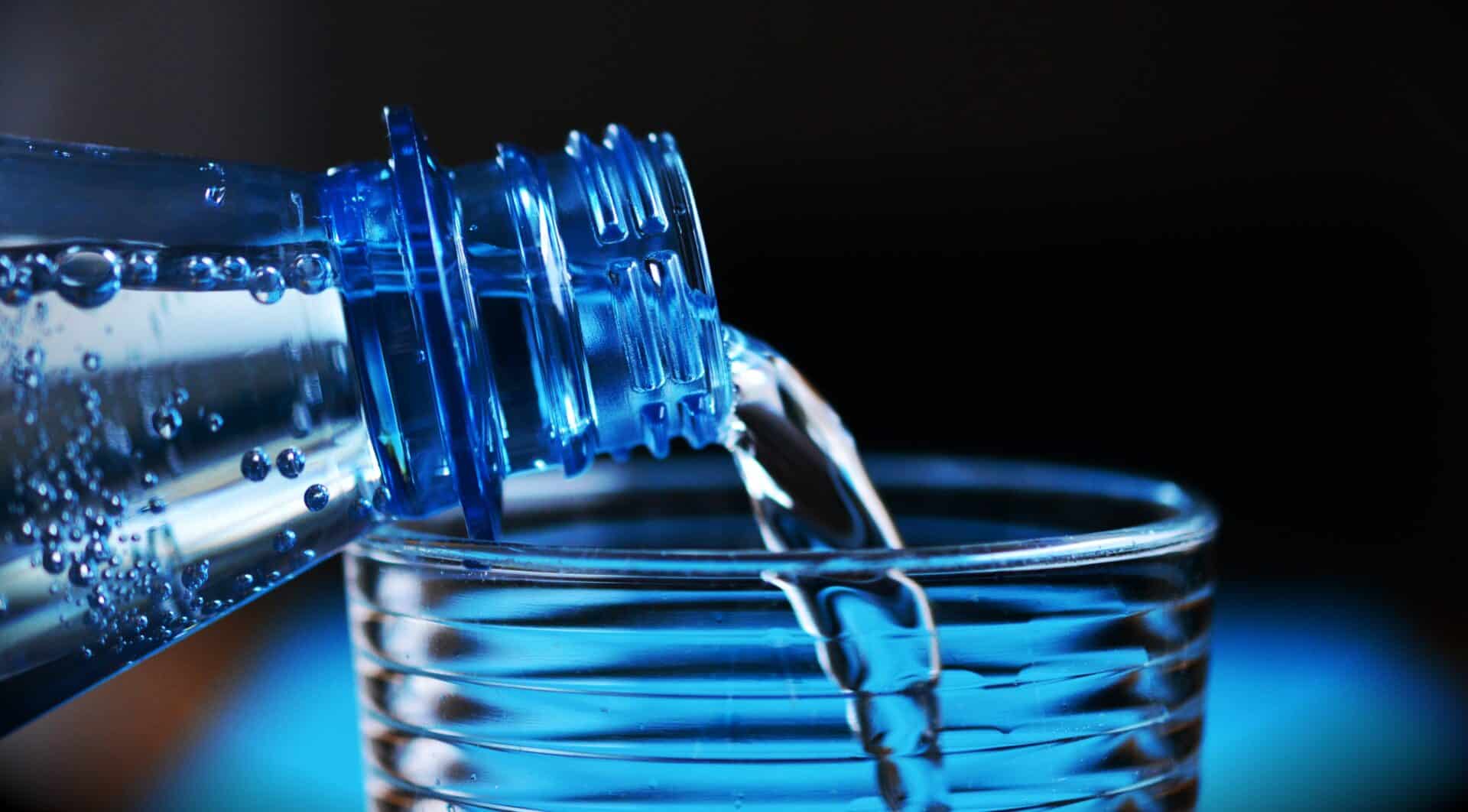The distinction between distilled water and bottled water can be confusing. Distilled water is created by boiling water and then condensing the steam back into a liquid. This process removes impurities that are present in the original water source, leaving behind pure H2O molecules. Bottled water, on the other hand, is simply filtered water that has been packaged for convenience and portability. Although bottled water can also be purified, it is not as effective as distillation and often contains trace minerals such as calcium and magnesium.Distilled water is water that has been boiled into steam and then cooled to become a liquid again. This process removes any impurities or minerals from the water, making it purer than regular tap water. Distilled water is often used in medical and laboratory settings to create a sterile environment, as well as in automotive radiators and steam irons to prevent clogging.
What Is Bottled Water?
Bottled water is water that has been packaged in a plastic or glass container and sealed with a cap. It is available in a variety of sizes and can be purchased from supermarkets, convenience stores, gas stations, restaurants, vending machines, and online. Bottled water has become increasingly popular over the years because it is convenient to carry and can be used for a variety of purposes, such as hydration and cooking. Additionally, it is often perceived to be safer than tap water due to its purity and better taste.
Bottled water is regulated by the Food and Drug Administration (FDA) and must meet certain standards before it can be sold. These standards include testing for contaminants, verifying that the source of the water meets safety requirements, and ensuring that the product label accurately reflects the content of the product. Additionally, bottled water must contain no added chemicals or artificial flavors.
Bottled water can come from a variety of sources including springs, wells, rivers, lakes, or aquifers. The most common type of bottled water is spring water which comes from an underground source that has been tapped into by an artificial well. Bottled mineral water contains additional minerals such as calcium or magnesium which may offer health benefits but also can vary in taste depending on the mineral content. Finally, purified or distilled waters are treated with various processes such as reverse osmosis or distillation which removes most contaminants from the source water leaving behind only pure H2O.
Overall bottled water offers convenience for those on-the-go as well as peace of mind about drinking clean safe drinking water when away from home.
Difference In Source
The difference in source can be seen in a variety of ways. For example, one source may be a book while another may be an online article. The content of the sources may be different, as one source may provide more detailed information than another. Additionally, the accuracy of the sources may differ, as one source may have more reliable sources than another. The credibility of the sources is also important to consider, as one source may have been verified by an expert while another has not. Furthermore, the language used in each source can vary greatly, with some sources being written in a more formal language than others. Finally, the perspective or bias of each source should also be taken into account, as some sources provide an unbiased view while others are more opinionated.
Overall, there can be many differences between different sources that should be considered when researching a topic. It is important to evaluate each source to determine its accuracy and relevance before using it for research purposes.
Purification Process
The purification process is a necessary part of many manufacturing processes which involves separating impurities from a raw material or product. Different methods are used for different types of products and processes, depending on the nature of the product and the desired outcome. Common purification techniques include distillation, filtration, reverse osmosis, and crystallization. Each method has its own advantages and disadvantages, so careful consideration must be given when deciding which method is most suitable for your application.
Difference in Purification Process
The main difference between various purification processes is in how they remove impurities from a material. Distillation is a process where two liquids with different boiling points are heated and condensed to separate them, while filtration uses physical filters to trap particles as they pass through. Reverse osmosis uses pressure to force liquid through a semi-permeable membrane, trapping impurities on one side while allowing clean water to pass through. Crystallization involves cooling a solution until the desired components form crystals which can then be separated from the rest of the solution. Each process has its own advantages and disadvantages depending on the application and desired result.
In order to choose the most suitable purification process for your needs, it is important to understand the difference between each technique and how it can be applied to your specific situation. Consider factors such as cost, time required for processing, purity level achieved, ease of operation, safety concerns, environmental impact and more before making your decision. With careful consideration you can ensure that you choose the right purification process for your needs.
The Difference in Taste
When it comes to food, everyone has their own preferences and tastes. Some people prefer spicy food, while others lean towards a milder flavor. There is also a big difference between fresh and processed food, which can affect the taste of what you are eating. Fresh ingredients are often more flavorful than those that have been processed, as the process can remove some of the flavor.
When it comes to fresh versus processed foods, one of the main differences is in how they are stored. Fresh foods will be kept at a cooler temperature and away from direct sunlight, while processed foods are often stored at room temperature or higher. This can cause the texture of the food to change over time, which can affect the taste as well.
Fresh ingredients tend to be more expensive than pre-packaged or processed ingredients because they need to be handled with more care. They also require more prep work before they can be used in cooking, whereas processed ingredients may already come with instructions for use. The added effort and cost involved in preparing fresh ingredients mean that they often have a more complex flavor than pre-packaged options.
Another difference between fresh and processed foods is that fresh ingredients usually have fewer chemicals or additives added to them for preservation purposes. This means that the flavors in these types of foods remain true to their natural state, giving them an edge over those with preservatives added to them.
Finally, when it comes to taste, fresh ingredients usually provide a fresher taste than their processed counterparts as well as being healthier overall for your diet. As such, many people opt for fresh ingredients when cooking instead of using pre-packaged items from the store.
Overall, there is a definite difference between fresh and processed foods when it comes to taste and nutrition. While both offer convenience and ease of use, those who want a better tasting meal should opt for freshly prepared meals whenever possible.

The Difference In Cost
When it comes to the difference in cost between traditional and digital media, there is a clear divide. Traditional media can be expensive due to the need for physical materials such as paper, ink, and other supplies. Digital media, on the other hand, is much less costly due to its reliance on technology and digital tools. Digital media also offers a range of options when it comes to publishing, such as online platforms and social media channels, which can be used at a fraction of the cost of traditional methods. Additionally, digital media offers many advantages over traditional media when it comes to reaching wider audiences. For instance, digital content can be shared easily across multiple platforms and devices, giving brands access to an even wider audience than traditional methods may have been able to reach. This means that companies can reach more potential customers with their message at a lower cost than ever before.
Ultimately, while the cost difference between traditional and digital media varies depending on the type of content being produced and the platform being used for publication, one thing is certain – digital media can be much more cost-effective than traditional methods in terms of reaching larger audiences with a greater impact.
Difference In Mineral Content
The difference in mineral content between sea and ocean water is a fundamental aspect of oceanography. Ocean water generally contains higher levels of minerals such as sodium, sulfate, magnesium, and calcium than sea water does. Sea water usually contains higher levels of other minerals such as potassium, boron, and strontium. The concentration of minerals in the ocean varies depending on where the water is located and its depth.
For example, coastal regions tend to have more nutrients due to runoff from land and the mixing of fresh water with salt water. Deep ocean waters contain fewer minerals because there is less mixing with surface waters. In addition, some parts of the ocean are more saline than others due to evaporation or other processes. These differences in mineral content can affect the food chain in an area; for instance, some species may be better adapted to an environment with high levels of certain minerals while others may prefer areas with lower concentrations of these same minerals.
The concentration of minerals also affects the physical properties of seawater such as its temperature, pH level, salinity, and density. For example, high mineral concentrations tend to increase the density of seawater which can impact how currents move through it. In addition, some species may be unable to survive in waters with high salinity or other extreme conditions caused by differing mineral concentrations.
In conclusion, it is important to note that there are significant differences in mineral content between sea and ocean water which can have an effect on both physical properties and biological activity within an area. Understanding these differences can help scientists better study our oceans and plan conservation strategies accordingly.
The Difference In pH Balance
The pH balance of a substance is an important measure of its acidity or alkalinity. The pH scale measures the relative concentration of hydrogen ions in a solution, ranging from 0 to 14 with 7 being neutral. Anything below 7 is considered acidic and anything above 7 is considered alkaline. Understanding the difference between acidic and alkaline solutions can be helpful for many different applications, including cleaning, gardening, and health. Acidic solutions are better at dissolving certain substances, while alkaline solutions are better at breaking down certain compounds. Knowing the difference between these two solutions can help you make informed decisions about which one to use for specific tasks.
When it comes to cleaning, acidic solutions are often used to dissolve dirt and grease, while alkaline solutions are used to break down proteins and other organic compounds. For example, vinegar is an acidic solution that can be used to clean kitchen surfaces, while baking soda is an alkaline solution that can be used to remove tough stains from clothing or upholstery. In gardening, acidic soils are best for growing acidic-loving plants like blueberries and rhododendrons, while alkaline soils are best for growing plants like lavender or rosemary.
When it comes to health, understanding the pH balance of your body is important for maintaining proper health. The body’s pH should remain slightly alkaline in order to support healthy cell function and prevent disease. Eating an unbalanced diet high in processed foods or animal products can upset the body’s pH balance and lead to inflammation and other health problems over time. To keep your body balanced, it’s important to eat a diet rich in fruits and vegetables that contain minerals like calcium and magnesium which help support a healthy pH balance within the body.

Conclusion
Distilled water and bottled water are both widely available, but they are different in terms of their origins and composition. Bottled water is sourced from natural springs, wells, and public water systems, while distilled water is created through a process of distillation that removes impurities. Both types of water are safe to drink, but distilled water may be better for certain uses such as cleaning electronics or watering plants since it is free of additives. Ultimately, the choice between distilled or bottled water depends on the purpose for which it is being used.
In conclusion, knowing the difference between distilled and bottled water can help you make an informed decision about which type of water to use for different purposes. While both types are safe to drink, you may want to consider the other uses for which each type might be more beneficial.

